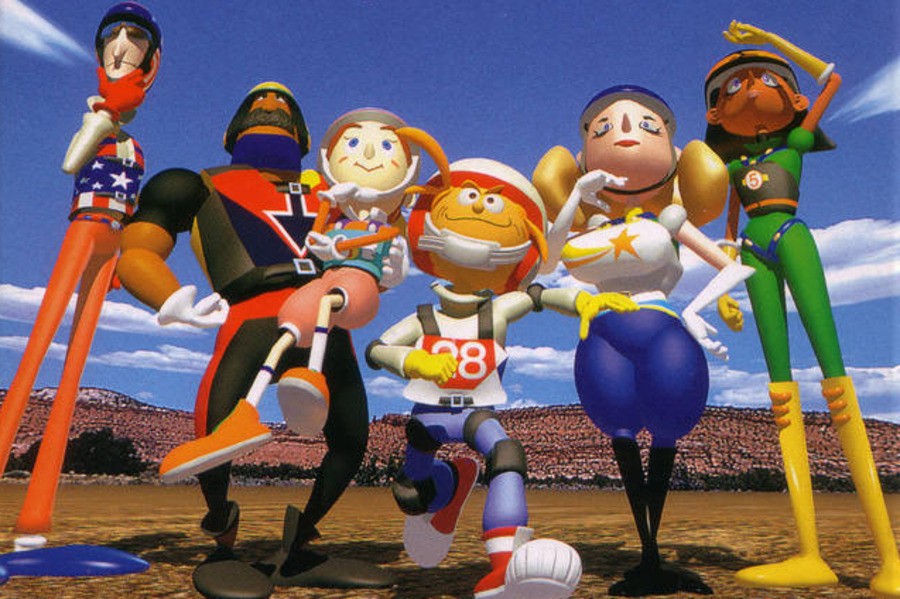
Pilotwings 64 is fondly remembered for the impressive amount of freedom that it granted gamers back in the late 90s. 'Whether it was taking in the view while flying a hang glider or navigating your gyrocopter along a meandering and treacherous river, there was a memorable moment for everyone. Yet, despite all the vibrant landscapes and challenging tasks that players faced in the game, it's likely that none of these gameplay moments are as ingrained into our brains as another one of Pilotwings 64's key successes; the music.
Its chilled-out and funky tunes excelled at making the player feel completely at ease — even in the face of danger. Not only that, but they were (and still are) so catchy that it was all too easy to find yourself humming along as you played. Even today, you'll find tons of videos on YouTube paying homage to the game's superb soundtrack with new renditions and remixes of the best songs.
 Watch on YouTube
Watch on YouTubeSubscribe to Nintendo Life on YouTube841k
In order to truly celebrate the crowning achievement that is Pilotwings 64, Nintendo Life recently caught up with Dan Hess, who composed and arranged both the game's music and sound. Read our full interview below to find out more about how the game and its audio elements came to be, as well as Dan's first-hand insight into game development during the early days of the Nintendo 64.
Nintendo Life: Hi Dan, many thanks for taking the time to talk with us. To start off with, could you give the readers a little bit of background into how you became involved with Paradigm Simulation/Paradigm Entertainment?
Dan Hess: This is a loaded question and requires some personal history and also some history of Paradigm Simulation/Paradigm Entertainment. My best friend is Wes Hoffman, one of the founders of Paradigm Simulation. We grew up together in Michigan outside of Detroit. We were video game nuts and dreamed of being able to build video games one day. While we were both musicians (keyboardists), Wes was also a gifted artist and leaned heavier towards art than music. He attended Syracuse University to study computer graphics which at the time was a newly developing industry. I continued to play, travel and record with bands in the Detroit area, two of which were signed to labels and had national releases. Through music I became fluent in synthesis, audio gear and digital sound. Wes was hired right out of college into Merit Technologies in Plano, Texas, specializing in flight simulation.
At Merit, Wes met the other founders of Paradigm Simulation, Mike Engeldenger and Ron Toupal. All three were part of a team Merit put together to create a ground-breaking simulation program for a bid on a military simulation proposal. The team identified real-time sound as a potential competitive advantage and thus I was brought in as a consultant and eventually a team member. Although Merit lost the bid, our core team created a powerful new simulation application. When Merit decided to take another direction, Wes, Ron and Mike left the company in 1990 to form Paradigm Simulation. I was asked to be the fourth founding member but my wife at the time was not receptive to a move and I worked remotely instead — a decision which I have since regretted, as the company became very successful (but you live and learn).
NL: What projects did you work on before Pilotwings 64?
Hess: I was the designer of Paradigm's first product, Audioworks, the world's first real-time multi-platform computer controllable sound system for simulation. Audioworks did well, and soon after Paradigm Simulation released Visionworks and continued to roll. I worked closely with Paradigm, helping to refine Audioworks and creating all the sounds for their simulations. It was a lot of work but a lot of fun, especially working with my close friends, Wes and Mike. We created several simulators based on the Paradigm Simulation applications for companies all over the world. It was incredible to watch the small four man team grow in to a company of over 100 employees.
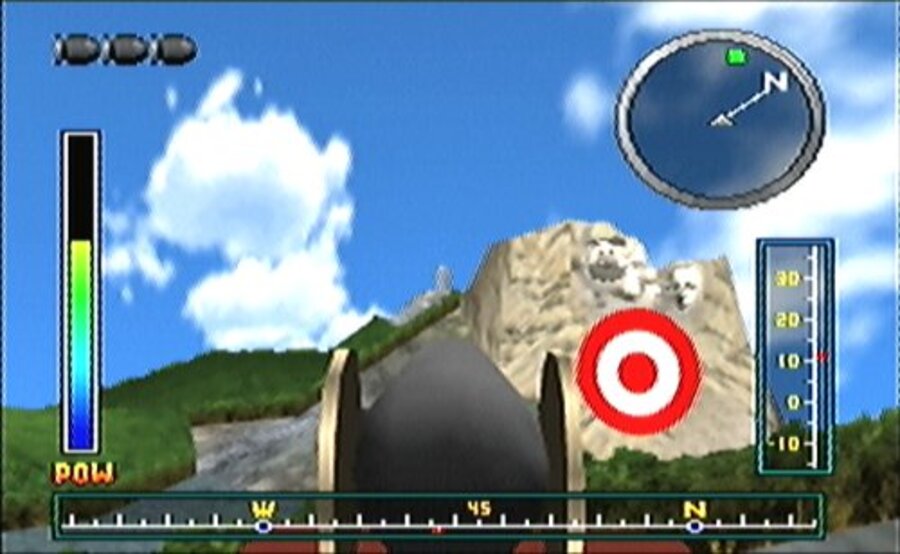
NL: It certainly sounds like a major success! How did this lead the way to Paradigm eventually working on Pilotwings 64?
Hess: Simulators are really just video games when you think about it. In the mid-90s, Paradigm Simulation split in to two companies, forming Paradigm Entertainment, to address the video game market. When Nintendo decided to leapfrog its competitors’ 32-bit systems and release a 3D 64-bit system (the N64), they realized their current game developers would be unable to effectively produce a 3D game in time for the system's release. Nintendo contracted several simulation houses to create the initial games for release with the N64 system and Paradigm Entertainment was one of those chosen. We were chosen to create Pilotwings 64, sequel to the original Pilotwings game. Of course, with my experience with the Paradigm Entertainment development and as a musician/composer, I was brought on for soundtrack development for Pilotwings 64.
NL: Pilotwings 64 was Paradigm's first foray into video game development. Was it your first experience at composing music for a video game? How did you feel when you learned that you would be creating the musical score for a Nintendo 64 launch title?
Hess: I created music for a simulator experience which was designed to be a Location Based Entertainment System (Magic Edge) in the early 90s using the Audioworks platform, but Pilotwings 64 was my first experience composing for a commercial video game. I was thrilled to take it on as it was the realization of a childhood dream!
NL: Was it difficult creating music and sound effects for the Nintendo 64?
Hess: What most people don't realize is that at the time, soundtrack development for video games was 25% music composition, 25% sound development, 25% interfacing with team members and directors, and 25% software/system manipulation. N64 cartridges had limited ROM memory — around 8 megabytes — and very little of that was dedicated to sound effects, let alone music. Forget recorded music, that was way too intensive for the hardware. Assuming the games required more than one or two repeating 4 bar tunes (as in the game 1080° Snowboarding), soundtrack artists had to create sound databases of the instruments to be used in the game, then create MIDI sequences to trigger the sounds in order to produce the real-time tracks for the game. Even in the 90s, this was an archaic form of music creation, but such were the limitations of the video game systems at the time. Composers who could work within those limitations were required.
NL: Did you compose the soundtrack during the actual game development stage or did work begin on it once a build of the game was effectively up and running?
Hess: Both. I flew into Dallas for a pre-game development meeting which gave me an idea of what the game was to become, and spent the next few months creating my first draft of a sound/sample database and some of my early sequences for the game. Some of these developed into tracks for stages of the game. I flew back and forth a couple times, writing and installing soundtracks and databases, until finally moving down there for eight weeks straight to complete the development.
Keep in mind that the game itself was in development and in a constant state of flux, so we all had to adapt daily. There were daily team meetings, many with the Nintendo team sent to direct the game. The Paradigm Entertainment team grew as the game development expanded beyond expectations, borrowing resources from Paradigm Simulation as needed. It was a "campy" atmosphere with everyone working closely together, sacrificing together to maintain the aggressive schedule and meet the demands of Nintendo. As a side note, we at Paradigm Entertainment were the only company of all those selected by Nintendo to deliver a game on time for the system's release in 1996. One of my fondest memories is of a Nintendo executive flying from Japan, literally with a briefcase chained to his arm, to show our team the then in-development launch title, Super Mario 64. We were all blown away and it served as motivation for us to make Pilotwings 64 as good as we possibly could.
NL: What was the biggest challenge that you personally faced during the development of the game?
Hess: My biggest challenge was communication and the culture gap with the Japanese Nintendo team. As a composer, I rely on direction from my client regarding types of music and descriptions of music desired for their project. What I came to find out — quite painfully — is that Japanese descriptions of music types are worlds apart from Western descriptions. Their idea of what pop, metal, hard rock, alternative, funk, soul, R&B and so on are quite different from ours, let me assure you. I wrote dozens and dozens of songs that were not selected before finally requiring the Nintendo team to provide reference songs to make sure we were on the same page for musical direction. It would be nearly impossible to express the frustration of the long development meetings, where we relied on our questionable interpreter to communicate with the Nintendo team. We would ask a question which would invoke a 15-minute discussion between our interpreter and the directors, and all we would get as a translated response was a "yes" or "no". Really? That is your interpretation of his answer? After two to three hour long meetings we would emerge more confused than when we entered. It would drive us crazy.
Looking back, I remember the game director, Makoto Wada, showing interest in some of the tracks I had developed for the Magic Edge project. One of those became the Hang Glider track after a complete overhaul. Overall, Wada-san asked me to create "floaty-fluffy" tunes for the game — these were the actual terms he used. The characters of the game said "funky-fun" to me, and I tried to incorporate elements of both.
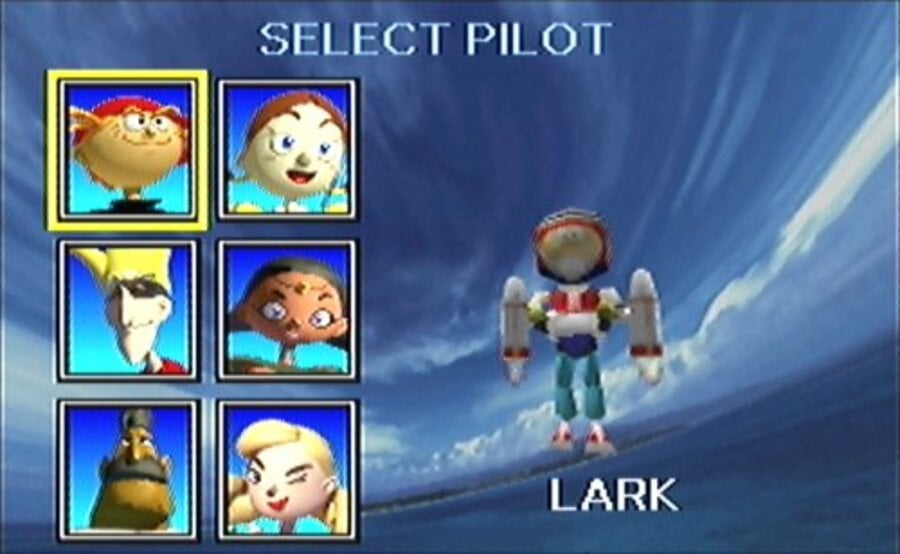
NL: It’s very clear that the Pilotwings 64 soundtrack incorporates aspects of soul, funk and even rhythm & blues music. Was the music influenced by particular artists or popular songs?
Hess: The Pilotwings 64 soundtrack indeed reflects all those elements because these are my own influences, and I was able to bring that to the game. I was surprised by the acceptance of this from Wada-san. This approach is in stark contrast to Japanese composers, as these are primarily western influences. Although there were no intentional artist influences, the Birdman track has a related story attached to it.
As I mentioned earlier, near the end of the development of the game, I moved down to Dallas for eight weeks to work with the team directly. Once most of the communication issues and the cultural gap were overcome, I was able to write tracks which were approved for the game. A lot of effort went in to the "feel" of the game tracks as a collection and into the flow from track to track. But the track that gave me the most difficulty to create was the Birdman.
NL: The Birdman track is a favourite for many players. Could you tell us a bit more about it?
Hess: I don't know how many tunes I actually wrote in an attempt to appease Wada-san's need for a "floaty-fluffy", but I think 20 would be a conservative estimate. This went on for the first seven weeks of that last integration trip. I would write a few tunes, work them up and present them to Wada-san who would give me some kind of puzzled look, smile and shake his head every time. This grew increasingly frustrating and became my main focus.
As the looming deadlines sped closer, more of Paradigm's personnel were shifted from Paradigm Simulation to Paradigm Entertainment. The development became very campy as most of the company was basically under lock down. All meals were catered and our little kitchen was loaded with any beverage or snack you could want so we could remain in the studio at all times. For many of us this was literal; we would grab a few hours of sleep on couches or at our desks.
During this period, Mike Engeldenger, chief programmer for the game, invited me to share his larger office as we enjoyed working together. I moved my entire audio rig in there and proceeded to write and create tracks mostly over headphones, but often sharing the tunes with Mike over speakers as well — in fact, Mike inspired the Cannonball track and its gradual tempo increase!
One day, I was playing around with various feels and grooves, searching for the Birdman track when a tune began to form in my head and I quickly worked it up. Listening to it in its early stages, it sounded like a Barry White soul groove, chilled and kind of sexy — dreamy if you will. I was slap happy by this time, just creating for the sake of creating. At one point, I threw it up on the speakers for Mike to hear with a smile and we both got a kick out of it. At that very moment, Wada-san happened to be walking down the hall just outside of Mike's office. He stood in the doorway and listened for a moment, a grin growing on his face and began jumping up and down and flapping his arms!
"Birdman?" I asked, and his head nodded excitedly.
I spent the next hour or so adding in various "solos" to the piece, which was actually kind of tongue-in-cheek, some complete with applause breaks. After some melody tweaks, the tune felt right and I was finally past the Birdman track.
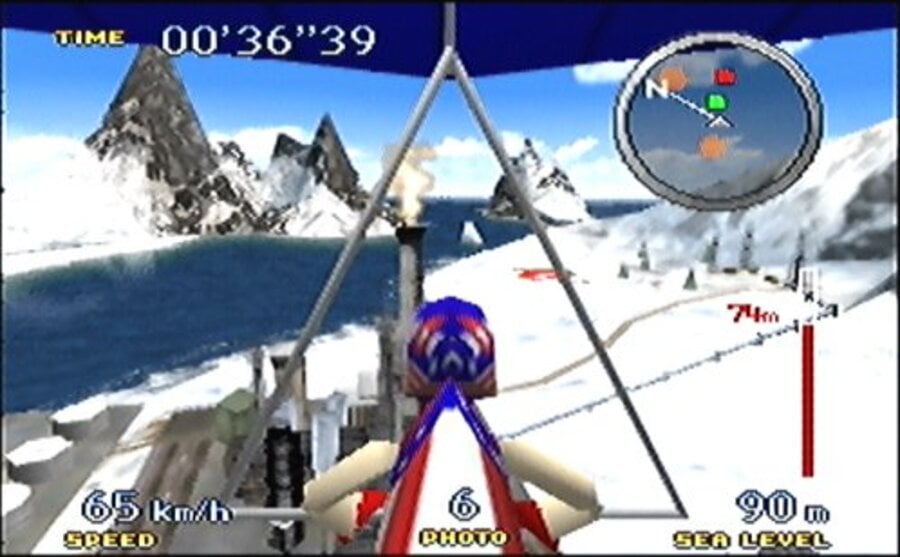
NL: Do you have a favourite track from the game? Which part of your work are you most proud of?
Hess: I was pretty happy with many of the tracks because I was allowed a lot of personal freedom, with the ability to instil funk and soul in to the game. That was a big deal to me. I liked the Rocket Belt and Skydiving tracks, but was equally pleased with the menu selection groove. The Jumble Hopper was another challenging track that I was finally able to create with the right energy.
I am most proud of the technical achievement of the soundtrack process. The entire sound database was under 800 kilobytes...that's less than a megabyte for those youngsters who have only dealt in gigabytes for the past several years. That includes all instruments in the game, sounds and sequences. Also, as graphics were the priority, the designers limited me to six to eight voices at a time for my music.
A voice is a sound emitter, each one responsible for one triggered sound in the soundtrack. For example, each kick drum hit uses a voice, each snare, each note on a synth, etc. In the case of a drum, the voice releases back to the system when the sound ends. In the case of synths, electric pianos — basically any sustaining instrument — each key held uses a voice until it is released. This leaves very little to work with to produce the soundtrack's fullness. I had a strong background in sound design so I was able to work within the memory limit, but the voice limit was a constant struggle. Since Birdman had no game goals for the player (and because it became a team favourite), I was allowed a few more voices which gave it a fuller sound.
I am even prouder of what the team were able to achieve under great pressure facing a very serious deadline. We were the only company other than Nintendo to deliver a game in time for the system's release, and believe me that was a big deal.
Interestingly, the game's music was not well-received by the older generation game reviewers. It didn't bother me too much at the time, because they weren't my target audience. Also, Minoru Arakawa, the President of Nintendo of America at the time, said that Birdman was his favorite video game track at the E3 show in 1996 when he presented Pilotwings 64.
NL: Have you worked on any other video games since Pilotwings 64?
Hess: A year after Pilotwings 64 was released, I began work on F-1 World Grand Prix for the N64. Paradigm Entertainment was the developer and my best friend, Wes Hoffman, was director of the game. Wes set the bar very high and it was great to work so closely together. I was responsible for both the music and the sound effects, and there were many challenges throughout the development. Wes wanted a pit boss to be verbally communicating with the player at all times, giving detailed information about the race. With 22 drivers, several lap numbers and a large list of variables, the amount of potential phrases was very large. Of course, I was allocated less than a megabyte of ROM to make this happen, which is almost funny.
Voice communications of this type tended to sound very robotic or fragmented, as words are inserted into stock sentences. I brought in my good friend, John Vitale, a very talented sound designer/engineer to attack this with me. The recording session with the voiceover talent was critical, and we designed a complex method for cuing his reads so that the voice inflections of the various drivers/laps would match the sentences of which they were to be inserted. Two months later, after intense sound design and memory management, the game's pit boss came to life and was even better than we could have expected.
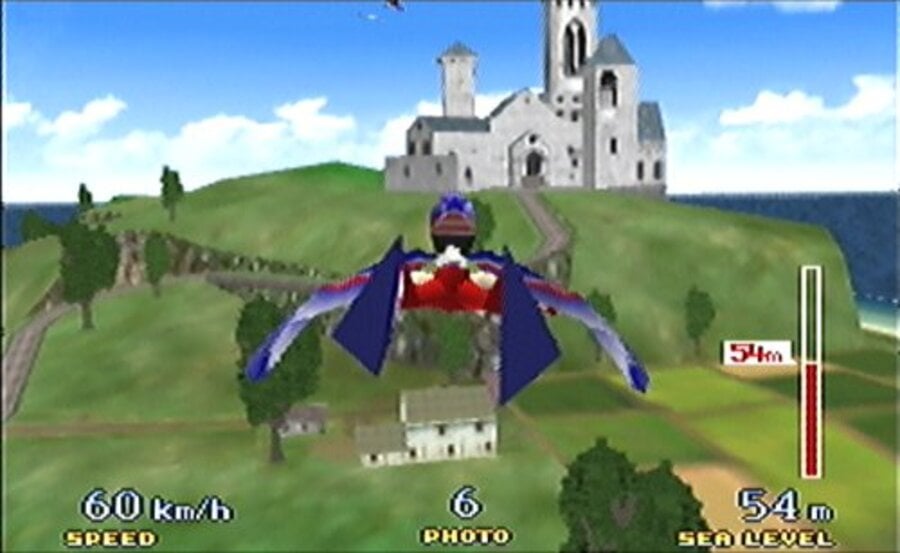
NL: Did you encounter any other challenges while working on F-1 World Grand Prix?
Hess: The publisher of the game, Video System, insisted on American guitar-based rock and roll, which is very difficult to pull off using sampled instruments. Guitars just don't come off that well unless they are recorded in real-time. The number of tracks required for the game dictated use of sampled guitars, bass and drums. Overall, I was happy with the finished tracks.
NL: Eventually you decided to leave the video game industry? Would you mind giving us a bit of insight into why you left?
Hess: I gave up video game music development after F-1 World Grand Prix. The market became flooded with clueless soundtrack artists, who underbid the projects just to get the contracts and had no concept of the total process of integration. The result was that game developers became frustrated with soundtrack artists, who thought all they had to do was write music and took no responsibility for the installation of their music into the games. With DVD audio hitting the market soon after, my unique talent set of musician/sound designer/integrator became less valuable and I didn't pursue any more game soundtracks.
NL: We couldn’t help but notice that you’re in a band. We take it that you’re still very much into your music?
Hess: I continue studio and live work for other artists and to create music with Skeleton Crew and Tim Diaz, a singer/songwriter out of the Detroit area. Skeleton Crew's last recording was a couple years ago and can be found here.
There is a good video on YouTube of a recording I arranged a couple years ago for charity called You've Got a Friend (Harmonie in the D). I can be seen playing keyboard and singing. The track features some of the best musicians in Detroit, including Thornetta Davis, Dave Edwards, Stewart Franke, Jill Jack and Ty Stone.
In 2002, I co-founded a startup company, which developed a holographic 3D display system which is another story altogether. I began doing gigs as a Dueling Piano player here in the States back in 2008, and that has taken me all over the country.
Last year, a young friend of mine pointed out that there were several YouTube uploads for the tracks I created for Pilotwings 64, with hundreds of comments on each. I got such a kick that the tracks represented such good memories for players. Most of all, it's great to find out that the target audience got the music as I intended it, unlike the 40-year old reviewers at the time. The comments have inspired me to redo some of the Pilotwings 64 tracks so keep your eye on my YouTube page for releases in the near future.
NL: Is there anything else you’d like to share with the readers?
Hess: Finally, I am tremendously flattered by all of the supportive postings on the soundtrack videos on YouTube and messages I have received there from hundreds of game fans all over the world. They were our target audience, not the older reviewers from the game magazines at the time. Not only did the kids get it, many tell me that my music influenced them, reminds them of the good times from their childhood, or affected them positively in significant ways. It is truly amazing to hear and I am thankful people take the time to communicate these things to me.
I never met Akito Nakatsuka, who has been listed in the credits of the game for music arrangement. I can assure you that I wrote, arranged, produced and installed/integrated each of the tracks in the game myself. Also, I want to give credit where it is due to the Nintendo team which was on-site at our Paradigm studios in Dallas. Makoto Wada was the game director and he was hands on with pretty much every aspect of the game. Yasuyuki Oyagi was the co-director and was brilliant at level design, which was critical to the gameplay.
NL: Dan, many thanks again for speaking with us and we wish you the best of luck with your future endeavours!





Comments 10
Every time I see an article about Pilotwings 64 I get excited thinking a VC release is imminent and/or a proper Wii U sequel.
I live in hope
@Nintenjoe64 - Me too man!
I keep seeing Pilotwings stories recently and it's making me itch for a proper update to Pilotwings 64.
The 3DS game was underwhelming to say the least...
Birdman and handglider FTW!
I've had the hang glider music in my head the whole time I've been reading this. The music in this game really is wonderful. In fact, I think I'll go grab my Pilotwings 64 cartridge and play it for awhile to sample all the different tracks.
Also, personally, I think Monster Games did an excellent job with Pilotwings Resort. It has a very different feel, yes, but it's a delightful little amateur flight simulator. It's still one of my favorite 3DS games, and I would wholeheartedly recommend it to anyone who owns a 3DS (play it with the 3D depth slider all the way up!).
Articles like this classifies this site as the number one source for Nintendo culture... GREAT! DOAvoice
Yo, great interview! More stuff like that pls.
Pilotwings 64 was my second N64 game, after Super Mario 64 of course.
The Pilotwings 64 soundtrack is certainly high up there with the best on the system. It's fitting, soothing, chill, unique, and pretty high quality for MIDI. Many early N64 games sounded lo-fi and muffled, but this one was crystal clear.
Now I have to check out the F1 World Grand Prix soundtrack. Never had that game back in the day, unfortunately, coz with the N64 you had a steady flow of the best racing games of the generation: Wave Race 64, Mario Kart 64, Diddy Kong Racing, 1080 Snowboarding, F-Zero X, Excitebike 64, Beetle Adventure Racing, Ridge Racer 64, San Francisco Rush, Snowboard Kids, extreme-G, and more (are still sitting in my collection).
I wish I bought/had played F1 World Grand Prix 1&2, WipEout 64, Micro Machines 64, and Star Wars Racer, but yeah honestly, there were just too many good racers on N64 and not enough time.
@SKTTR
Yes the N64 had a bouquet of racing games and you named a dozen of the greats, however you left one really good one out.... HYDRO THUNDER!!!!
Personally, my favorite music track in the game is Sky Diving.
This was my first N64 game, and what a beauty it was.
My favorite music track in the game are Sky Diving, Hang Glider and Birdman.
Show Comments
Leave A Comment
Hold on there, you need to login to post a comment...